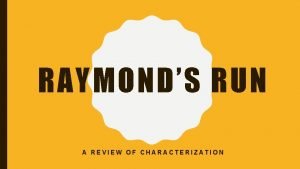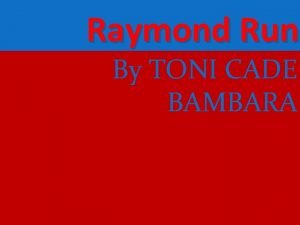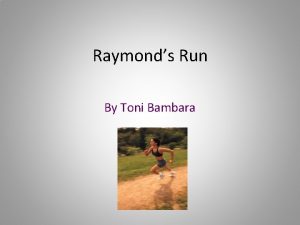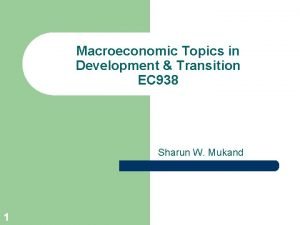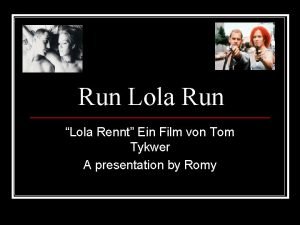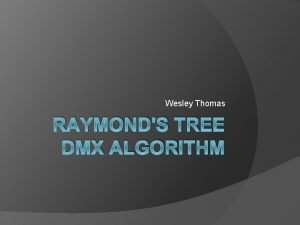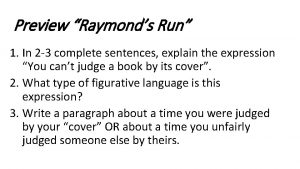RAYMONDS RUN A REVIEW OF CHARACTERIZATION CHARACTERIZATION Characterthe







- Slides: 7

RAYMOND’S RUN A REVIEW OF CHARACTERIZATION

CHARACTERIZATION • Character—the main person, animal, or object around which the action of a story is centered. • Characterization is the method by which authors create characters • There are two methods by which authors can characterize their characters: – Direct characterization: The author directly tells what a character is like. Ex: "She had red hair" "He had glassy blue eyes that showed flickers of green in the light" – Indirect characterization: The author implies what a character is like. This can be done through a character's words, actions, decisions and thoughts. Ex: An author shows a characters continually stand up for his friends, demonstrating he is loyal. • Remember that the differing between direct and indirect characterization is telling versus showing!

CHARACTERIZATION • The characters in a story are essential to it because they drive the plot of a story. • The things characters say, do, and the decisions that they make are all necessary in order to progress the plot of any story. • Therefore, the characterization of different characters not only reveals who they are, but also pushes the plot of stories forward

RAYMOND’S RUN • A short story written by American author Toni Cade Bambara • The story recounts a young girl’s challenge to win a community race, while dealing with significant problems at home and school.

AS YOU READ THE STORY… • Look for examples of direct characterization • Look for examples of indirect characterization. What do these examples show you about this character? • How do the actions and decisions the narrator makes within the story push the story along?

THINK-SHARE • As you read the story, determine the following: – What pieces of dialogue show us what Squeaky is like as a person? – What actions or decisions does she make that have long lasting effects on the story? – Are the actions or decisions that Squeaky makes related in any way to her character?

FINAL TASK • In “Raymond’s Run”, Squeaky never explicitly tells the reader about her relationship with Raymond. However, through her actions and the things she says, we are able to get a clear picture of her character and the relationship between the two. • On a blank sheet of paper, write an extended paragraph response (8 -12 sentences) detailing how Squeaky demonstrates the type of relationship she has with Raymond. Focus on her actions as well as the things she says throughout the story. Be sure to cite text evidence and dialogue for this story
